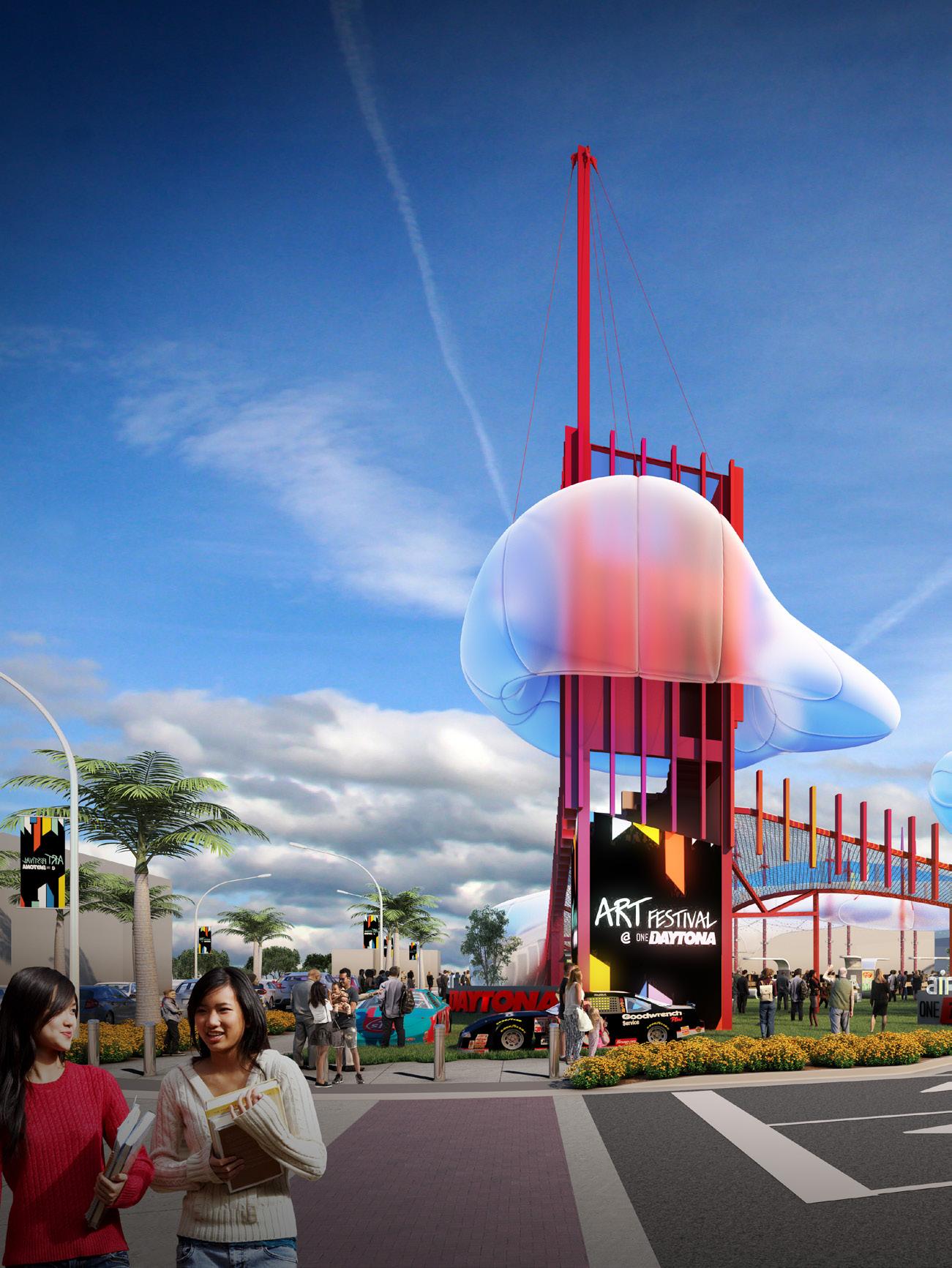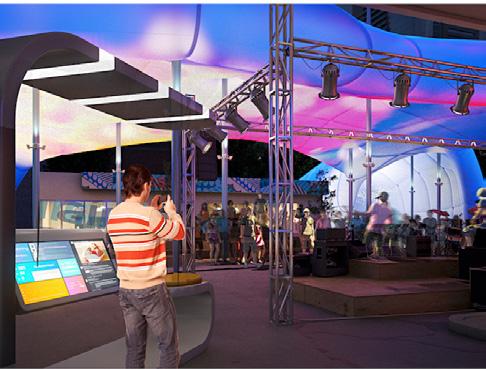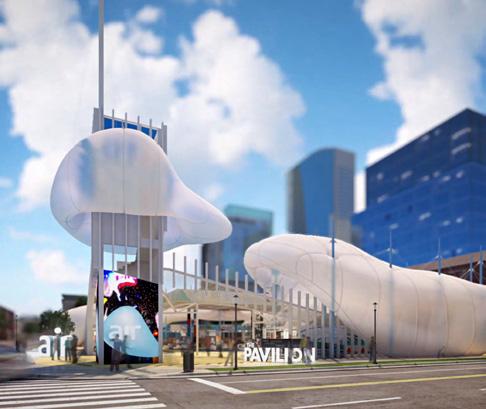
4 minute read
PORTABLE PARK
by Little
By Bruce A. Barteldt Jr.
Little conceptualizes Air, a portable popup park tying retail to ‘happenings’
Winner of The Global Architecture & Design Awards, Pop-ups and Temporary Concept


Every town has a dying commercial power center or a regional mall with vacancies caused by departing anchor tenants. Every city has abandoned urban properties—once active sites begging for redevelopment, but rendered irrelevant as development interests shifted. In both instances, a lack of a sense of place and purpose results.
Simultaneously, retail is undergoing rapid change, primarily due to shifting customer behavior. A flick of the finger allows consumers to purchase a 75-in. TV from their couch, and when it’s delivered a day or two later, they’ll binge watch entire seasons of their favorite shows. Everything has become "in the moment"—Instagram moments, fast fashion—and our expectations of time and change have become fluid. Trends in general have become a blur, so much so that we expect (even demand) freshness in all our experiences. Is it any wonder that stores can last a few weeks, or hours?
Yet with all this change, some things have remained timeless and even grown more relevant: a seasonal health fair, a farmer’s market, or a festival in the park. These places for "happenings," sprinkled across the pages of our life, create clear memories of special moments. Maybe it’s an antidote to the impersonal nature of our "online life" that people of all ages long for unique, authentic, local experiences.
FLEXIBILITY FOR PERSONALIZATION
Air is a concept for a portable popup park. Communities and developers can work with Air to set up for durations ranging from a week to six months and beyond. While an array of retailers/brands are built in, what makes Air unique is its invitation to local retailers, makers, farmers, entertainers, and community groups to breathe life into the experience. Air provides the environment, the kit of parts, the program structure, marketing, management, and guidance. The rest is local. Certain aspects are left open-ended to allow the local community or neighborhood to personalize it.
To inspire a compelling internal rethink for its retail practice, Little challenged its team to mine for breakthrough ideas. The firm designs both retail stores and commercial centers. Little asked "How can we solve for both simultaneously?" This concept grew out of that exercise. See more at vimeo.com/270900512
The intention leads to the elusive "grit," patina, and authenticity that customers prefer and that developers seek but can’t seem to create. What sets Air apart from conventional developments is the notion that "happenings"—not the retail alone—are the experience. In fact, it you create the happening, the customer and therefore the retail, will follow.
While the example shown illustrates the occupying of a deserted gas station, Air can go virtually anywhere and is scalable to accommodate a variety of settings. Air’s modularity not only allows for its mobility and ability to conform to different event and merchandising requirements, but also enables it to expand or shrink and change shape. Either for a regional mall parking lot or a city park, Air creates synergies, sparks curiosity, and provides a novel venue for enjoyment.

ELEMENTS OF AIR
The concept was branded "Air" to evoke its ever-present, yet transient and fluid nature. The term can fit anywhere, yet is identifiable enough to take on a brand position of its own when popping up from place to place. Branded elements are applied for primary identification, and the logo geometry (which echoes the cloud elements) is used throughout. Fixed, digital, and projection graphics provide wayfinding and information.
As a result of Air’s flexible/modular nature, the circulation pattern can vary at each installation. The intention is to locate mobile popup retailers between event spaces at opposing zones of the subject site. Larger (i.e., containers) and smaller mobile retailers (i.e., kiosks/carts) are grouped in separate zones to activate adjacent event functions and drive movement from zone to zone. All fixtures are component-ized into a flexible kit of parts that can be loaded into a container for ease of relocation and setup. An array of component types allows for an array of retailers. Larger (i.e., containers) and smaller mobile retailers (kiosks/carts) are grouped in separate zones to activate adjacent event functions and drive movement from zone to zone. The main feature of the space, an inflatable fiberglass fabric membrane, is both iconographic and sheltering. These cloud-like elements diffuse sunlight during the day and are activated by lighting and kinetic coloration at night. Combinations of raw wood and finished phenolic surfaces make up the fixture palette. Beyond community-sourced graffiti, all décor and visual merchandising is left up to each popup retailer.


"Air is of our times — fluid and purposeful. Air pulls into town, unpacks a happening and brings communities together. Air floats along with trends and moves on before it becomes passé. Communities anticipate Air's arrival and wave goodbye when it leaves for the next town. Air is an unfolding story in which each neighborhood writes its own unique chapter."

TREND RESPONSE
Air is a response to the convergence of two seemingly unrelated trends. The first is the customer’s desire for constant change, conditioned by their digital devices. The second trend is the fundamental shift in commercial development resulting from customer expectations for authentic, meaningful experiences.

Bruce A. Barteldt Jr., AIA, LEED BD+C, is a Partner and Chief Innovation Officer at Little and can be reached at Bruce.Barteldt@littleonline.com.










